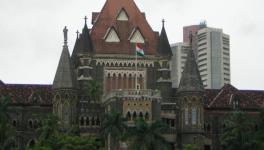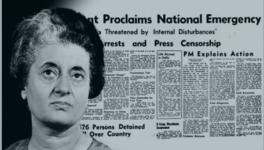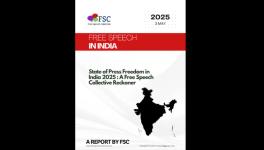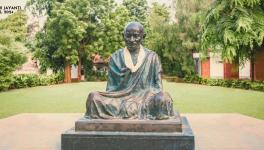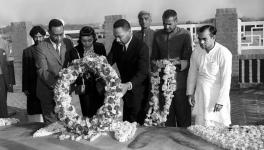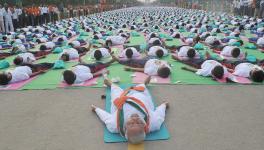People Defend Indian Republic from Majoritarian Threat
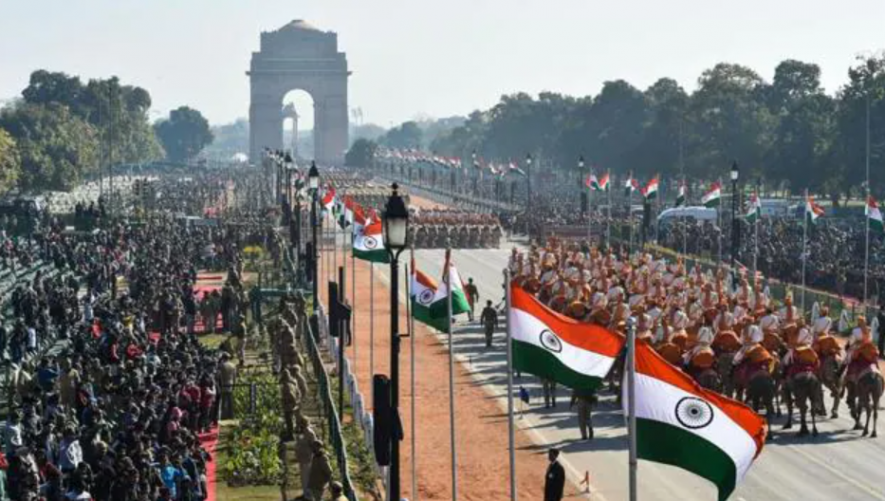
Image for representational purpose. Credit: Hindustan Times
We can trace the birth of the Republic of India to the struggle for freedom, during which our leaders developed the vision to transform Indians from subjects of the British empire to citizens of an independent country. Mahatma Gandhi said on 19 March 1921 that Indians had the birthright to establish a republic. He said so in the context of the persecution of freedom fighters over their public statements favouring the republican form of government once India liberated itself from British rule. In Gandhi’s statement, one can still hear Lokmanya Tilak’s clarion call, “Swaraj is my birthright, and I shall have it.” Today, ideas about the republic and Swaraj (independence), the core of the idea of India, are in peril due to majoritarianism.
Thousand-Year War Negates the Republic
Dr B R Ambedkar said in his last speech in the Constituent Assembly that India would truly become independent on 26 January 1950, the day it became a republic. Becoming a republic, therefore, heralded India’s final unchaining from the British regime, allowing Indians to enjoy the status of citizens in a country liberated from the colonial yoke.
But there is also a deeper meaning embodied in the idea of the Republic of India. Gandhi expressed this meaning best during a prayer meeting held in Delhi on 12 June 1947. He said the republic meant “all will live together”. In those days, India was dealing with partition of the country based on religion which devastated the shared ways of living together of many in its north-western and eastern parts, namely Punjab and Bengal. People of diverse faiths who had lived together for centuries suffered displacement and death. In that hopeless and disheartening atmosphere, the leaders of those days were establishing a Republic. They consciously chose not to define India by any religious denomination. This secular dimension made our republic inclusive. As Gandhi wrote in 1927, “I do not expect India of my dream to develop one religion, i.e., to be wholly Hindu, or wholly Christian, or wholly Islamic. But I want it to be wholly tolerant with its religions working side by side...”.
Such an all-encompassing republic is now assailed by majoritarianism. A recent manifestation was the statement of RSS chief Mohan Bhagwat, repeating Hindutva icon MS Golwalkar’s bizarre formulation that the Hindus have been waging a thousand-year war against external and internal enemies.
Ambedkar had said in the Constituent Assembly on 17 December 1946, after Jawaharlal Nehru moved the Objectives Resolution, that the statements of some leaders on waging war against the Muslims as if it were a war against the British were alarming. Ambedkar emphasised: “If there is anybody who has in his mind the project of solving the Hindu-Muslim problem by force, which is another name of solving it by war, in order that the Muslims may be subjugated and made to surrender to the Constitution that might be prepared without their consent, this country would be involved in perpetually conquering them.”
It is disconcerting that seventy-seven years later, influential leaders are using the language Ambedkar had warned against. Those who subscribe to the Hindutva ideology and Bharatiya Janata Party leaders are making hate-filled speeches against minorities, especially Muslims, and asking people to boycott them economically and exclude them from India’s collective life. These are nothing but calls for war against the Muslims. The tragedy of their menacing statements is compounded by the impunity with which legislators make them despite having sworn to abide by the Constitution. Such calls threaten the republic and its fundamental law, the Constitution. This grave matter must be dealt with seriously, for the might and majesty of the republic are at stake.
Threat to Secularism Threatens the Republic
In 1973, the Supreme Court held in the Kesavananda Bharati case that secularism is a part of the basic structure of the Constitution. This was before the forty-second amendment included secularism in the Preamble to the Constitution. But a war against any community in India would also mean a war against the republic and Constitution. The Supreme Court held in the same judgement that the republican form of government is also part of the basic structure.
It is distressing that those occupying constitutional posts question the basic structure today. They are trying to damage the republic’s foundations, anchored in the constitutional governance scheme.
Endangered Freedom of Press Equals Endangered Republic
A bright aspect of Indian democracy is how republicanism has been sustained for over seven decades. But this shimmer has considerably dimmed of late as its institutions were progressively compromised. One such institution is the media, said to be the fourth pillar of a republic. Its independence has been eroded by the tight grip of corporate control and the media’s unwillingness to ask the government questions. After billionaire Gautam Adani, considered close to Prime Minister Narendra Modi, took over NDTV, he said the media can criticise the government but should have the courage to praise its good works. But courage is summoned to criticise political regimes, not appreciate them. His statement points to the nexus between corporates and the ruling dispensation, about which most media outfits raise no critical question, earning them the unenviable moniker of “godi” or lapdog media. The mainstream media’s failure to fulfil its duty to hold a mirror to power reminds of Joseph Pulitzer’s remark, “Our republic and its press will rise or fall together.” The downfall of the press is a sure and sad sign of the downfall of the republic.
Recently, the BBC documentary, The Modi Question, which looks at the role of Narendra Modi, who was chief minister of Gujarat in 2002 when an anti-Muslim pogrom unfolded in the State, has been kept away from public view. The Modi-led central government has done this by using “emergency powers” of the Information Technology Act to remove the documentary from YouTube, Twitter, Facebook and other online platforms. These events describe our republic in terms of press freedom, which Gandhi said in 1941 was the foundation of Swaraj.
People in Defence of the Republic
During the discussion on the Objectives Resolution in the Constituent Assembly, Dr Ambedkar reflected on the idea of the Indian republic by emphasising unity among the “heterogeneous masses of our country”. He appealed to leaders to leave slogans and words that frighten people aside and take every party and section of society along. He said, “It would be an act of the greatest statesmanship for the majority party even to make a concession to the prejudices of people who are not prepared to march together.” How prescient was Ambedkar! His appeals from seventy-six years ago have enormous significance for our republic today. The BJP, the party holding the majority in Parliament and many States (and its top leadership), have adopted a muscular approach. They recklessly peddle majoritarianism, which has hurt the republic and besmirched its image.
When people across the country read aloud each word of the Preamble during the anti-Citizenship Amendment Act (CAA) protests, they demonstrated their will to defend the republic. They underlined their intent to safeguard the republic and the Constitution, which the CAA contravenes by linking citizenship with religion. Throughout, people have been at the forefront of defending the republic. While writing the national anthem, Rabindranath Tagore referred to the people as “Jana Gana”. He elevated them to Adhinayak and Bharat Bhagya Vidhata, or leader and master of India’s fate. And it is the people who are aware of the danger to the republic and exert themselves to defend it.
In his c address to the nation on the eve of Republic Day in 2000, former President of India KR Narayanan noted with deep anguish the “unabashed, vulgar indulgence in conspicuous consumption by the nouveau riche”, which has left the “underclass seething in frustration”. He said, “One-half of our society guzzles aerated beverages while the other has to make do with palmfuls of muddied water. Our three-way fast lane of liberalisation, privatisation and globalisation must provide safe pedestrian crossings for unempowered India also, so that it, too, can move towards ‘equality of status and opportunity’. Beware of the fury of the patient man, says the adage. One could say, beware of the fury of the patient and long-suffering people.”
The warning note President Narayanan struck 23 years ago on the golden jubilee of our republic sounds contemporary. Will it also mean that the state apparatus and leadership cannot escape the “fury of the patient and long-suffering people”?
The author was Officer on Special Duty to the late President of India, KR Narayanan. The views are personal.
Get the latest reports & analysis with people's perspective on Protests, movements & deep analytical videos, discussions of the current affairs in your Telegram app. Subscribe to NewsClick's Telegram channel & get Real-Time updates on stories, as they get published on our website.











